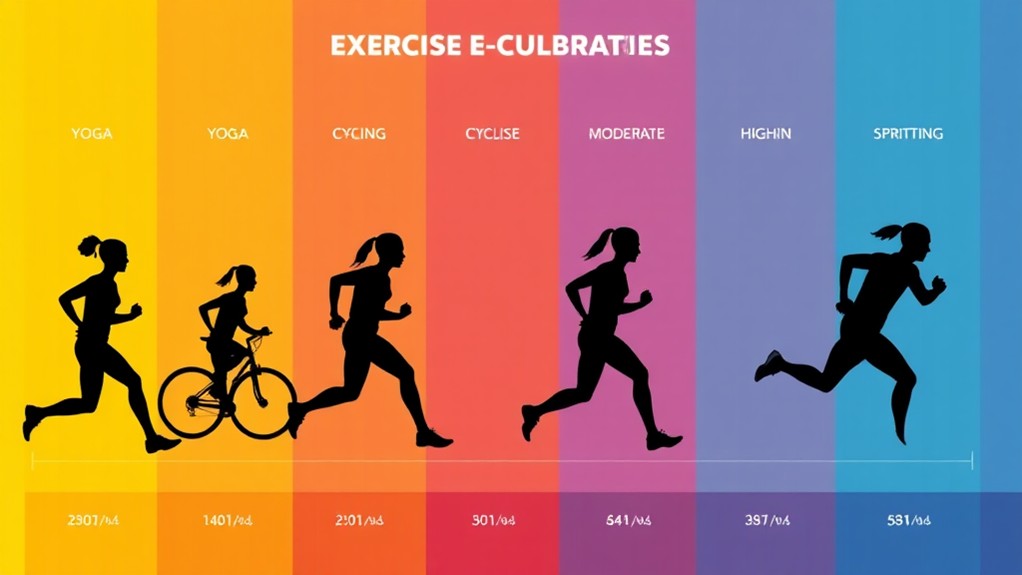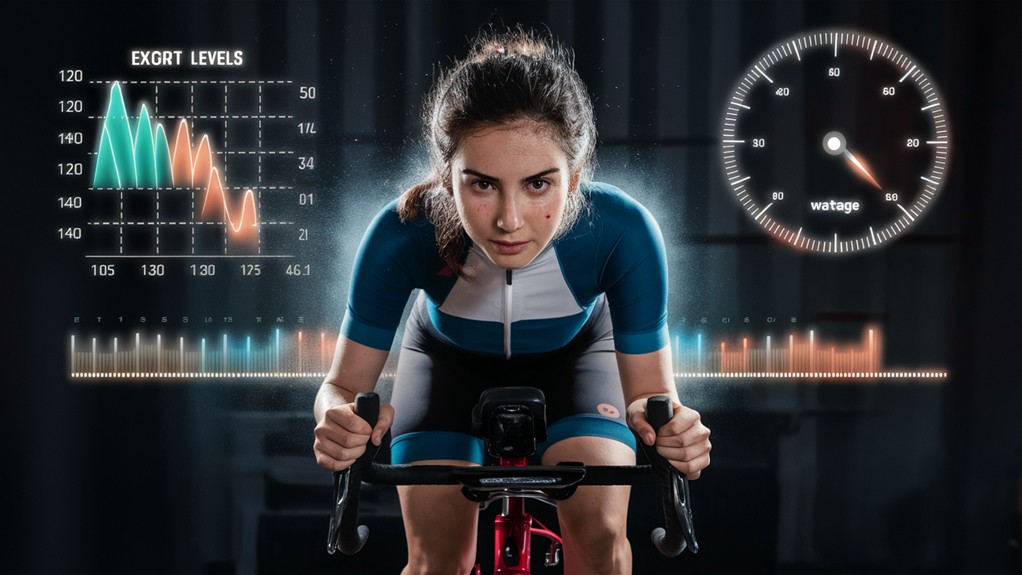You're using turbo trainers to optimize your workouts, which is perfect timing since understanding Rate of Perceived Exertion (RPE) can greatly improve your training experience. RPE is a scale from 1 to 10 that helps you gauge your exertion level, aligning it with specific training zones for more effective workouts. By using RPE, you'll enhance your self-awareness, manage fatigue better, and optimize your performance. For endurance-focused training, aim for an RPE of 6-7, while high-intensity interval training is best at an RPE of 8-9. Now, let's break down how to apply RPE to your turbo training for maximum results.
Understanding RPE Scales
Debunking RPE Misconceptions
You might think that RPE is too subjective or unreliable, but that's not the case. When used correctly, RPE offers several benefits, including aligning perceived exertion with specific training zones and enhancing workout specificity and effectiveness.
RPE likewise fosters self-awareness during training, allowing you to adjust your efforts based on daily performance variability.
Understanding RPE Benefits
The RPE scale is especially useful for athletes as it helps them tailor their workouts to their specific needs. For example, if you're aiming for a moderate-high effort, you'll score around 7 on the RPE scale.
With practice, you'll become more attuned to your body and can use RPE to adjust your workouts accordingly. By understanding and utilizing the RPE scale, you'll be able to optimize your training and achieve your fitness goals.
Applying RPE in Turbo Training
As you plunge into turbo training, a subtle understanding of your physical state becomes crucial for optimizing performance. To reveal your full potential, you'll need to apply RPE effectively in your training sessions.
Maximizing RPE Benefits in Turbo Training
When you incorporate RPE into your turbo training, you'll enjoy numerous benefits, including improved pacing and energy management. By gauging your exertion levels throughout different workout segments, you'll be able to sustain effort over longer durations.
For instance, an RPE of 6-7 is ideal for endurance-focused turbo training, while an RPE of 8-9 is suitable for high-intensity intervals.
Avoiding RPE Misconceptions
A common misconception about RPE is that it's difficult to use or inaccurate. However, by regularly monitoring your RPE during turbo sessions, you'll become more self-aware and able to adjust your intensity accordingly.
This will help you tailor your efforts to specific cycling power zones, leading to improved overall performance. By following your RPE, you'll be able to fine-tune your training and reach your goals more efficiently.
RPE and Training Zones

To break it down, lower RPE values (1-6) correspond to easy to moderate efforts, perfect for endurance training. For example, an RPE of 4-5 typically aligns with the Endurance power zone in cycling, promoting aerobic capacity and sustained efforts over longer durations.
Conversely, higher values (7-10) indicate more intense training zones. RPE 7, in particular, is indicative of a Moderate-High effort, which can correlate with the Threshold pace, ideal for improving lactate threshold and performance during key workouts.
One of the key RPE benefits is its ability to help you fine-tune your efforts to align with specific training goals.
In spite of some RPE misconceptions, using RPE to gauge intensity allows you to maintain appropriate pacing across different disciplines, ensuring you stay within targeted training zones for optimal performance gains.
Managing Fatigue With RPE
Managing fatigue effectively is a delicate balancing act that requires an intimate understanding of your physical and mental limits. By incorporating the RPE scale into your turbo training, you'll gain a deeper insight into your exertion levels and be able to make informed adjustments to avoid overtraining.
One of the RPE benefits is that it allows you to gauge your fatigue levels and make necessary adjustments to your training. By correlating your RPE scores with performance metrics, you'll be able to identify when you're pushing beyond your sustainable limits. This is vital for long-term training success, as excessive fatigue can lead to decreased performance and increased risk of injury.
Don't fall into the trap of RPE misconceptions, such as thinking that a high RPE score always means you're working hard. Instead, use the RPE scale to listen to your body and make adjustments based on your individual needs.
Optimizing Performance Using RPE

Effective turbo training involves fine-tuning your efforts to optimize performance and progress. By incorporating RPE strategies into your training, you can reveal the full potential of your workouts and improve your overall performance. Utilizing the RPE scale allows you to gauge your exertion levels and adjust your efforts accordingly, ensuring you're targeting the right training zones for optimal results.
Some of the key RPE benefits for optimizing performance include:
- Improving self-awareness to adapt training loads based on daily performance variability and fatigue levels
- Managing pacing in turbo workouts to effectively target threshold efforts and build endurance and strength
- Fostering mental resilience and promoting safer exertion levels, reducing the risk of injury through better self-regulation of effort
- Allowing for more precise control over your training, enabling you to fine-tune your efforts and achieve specific goals
- Providing a more subtle understanding of your physical exertion, enabling you to optimize your performance and progress over time.
Implementing RPE in Workouts
To start, you'll gauge your exertion levels on a scale from 1 to 10, facilitating self-awareness and better pacing during Turbo Training sessions.
For instance, a workout might include a warm-up at RPE 4-6, followed by main efforts at RPE 8, allowing for structured intensity management throughout the session.
By utilizing RPE, you can align your perceived effort with specific training zones, improving workout specificity and effectiveness, particularly during interval sets.
To make the most of RPE, regularly track and record your values.
This will help you understand your limits and boost mental resilience over time, ultimately leading to improved training outcomes.
Frequently Asked Questions
What RPE Should You Train At?
When determining your ideal RPE for training, you'll avoid misconceptions that it's only about pushing to extreme levels, instead focusing on benefits like improved pacing and self-awareness, to choose an RPE that suits your goals and fitness level.
What Should RPE 7 Feel Like?
When you're at RPE 7, you should feel like you're pushing yourself, but can still sustain it. Benefits include increased endurance, while a common misconception is that it's all-out effort – it's not.
What Does RPE 7.5 Mean?
When you're at RPE 7.5, you're working at a high, sustainable effort level. This intensity level has different RPE applications, offering benefits like improved endurance, increased mental resilience, and strengthened overall physical capacity for you.
What Is the Difference Between RPE 8 and RPE 10?
You'll notice a huge difference between RPE 8 and RPE 10, with the former offering benefits like improved endurance, while the latter provides peak power increases, disproving the misconception that they're interchangeable intensity levels.
